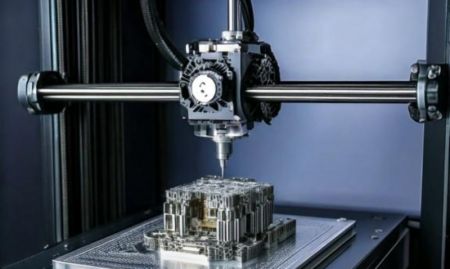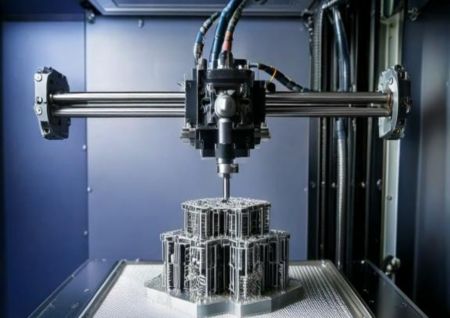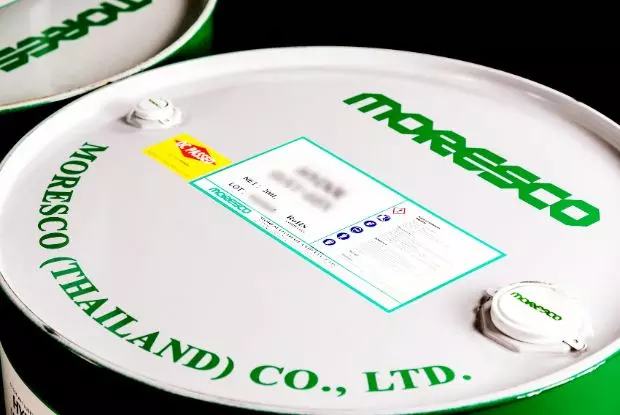The Potential of Additive Manufacturing for Cutting Tools: Scientific and Industrial Applications
Additive Manufacturing (AM), commonly known as 3D printing, is a process of building objects layer by layer, which is rapidly transforming traditional manufacturing methods like cutting and casting. AM provides new design freedoms and integration potential that were previously unattainable. Specifically, in the field of cutting tools, AM not only enhances machining efficiency but also extends tool life and improves the reliability and sustainability of production.
Compared to conventional manufacturing processes, AM allows for more complex geometric designs, optimizing cooling fluid supply, vibration damping, lightweighting, and topological optimization. This article explores the potential of AM in cutting tools, reviewing relevant research advancements and industrial practices, and highlighting future directions and their significance for industrial applications.
The global machining market continues to grow, reaching $379 billion in 2023, with machine tools contributing $88.6 billion to this figure. Machining processes such as turning and milling are widely used in industries like automotive, aerospace, defense, and medical sectors. Despite the long history of these techniques, cutting tools remain an area of constant innovation, particularly with the advent of digital solutions, process monitoring, and new materials. As a disruptive technology, AM is further revolutionizing the design and application of cutting tools.
The Potential of Additive Manufacturing in Cutting Tool Design
AM brings unprecedented flexibility to cutting tool design, especially in optimizing geometric structures and material properties. Below are four key areas where AM technology is applied in cutting tools:
1. Cooling and Coolant Supply:AM technology allows for the creation of intricate internal cooling channels that enable coolant to reach the cutting point more efficiently. This improves heat dissipation, reduces tool wear, and increases cutting efficiency. This design is especially important when machining high-strength alloys or difficult-to-machine materials.
2. Vibration Reduction and Vibration Behavior:Vibration can affect machining accuracy. AM technology enables the design of internal vibration-damping structures or the use of different material layers to reduce vibration. This improves machining stability and precision, particularly in high-speed or precision machining applications.
3. Lightweight Design and Topological Optimization:Lightweight designs reduce the weight of cutting tools, lowering the load on the machine and improving operational efficiency. With AM, topological optimization allows tools to be designed using the least amount of material while maintaining high rigidity. This saves material costs and enhances tool flexibility during replacement.
4. Functional Integration:AM technology enables multi-material printing, allowing tools to combine functions like wear resistance and vibration damping. This reduces the need for multiple tools and increases production efficiency. These functions can be customized to meet specific machining needs, extending tool life and enhancing productivity.
Scientific Research and Industrial Applications
While AM shows great potential in cutting tools, industrial applications face challenges such as high production costs and limitations in mass production. However, as the technology advances, these issues are gradually being addressed. More companies are testing and adopting AM-manufactured cutting tools, significantly improving machining performance in specific scenarios.
AM offers a fresh perspective on cutting tool design and performance optimization, with significant potential in cooling fluid supply, vibration reduction, lightweighting, and functional integration. Future research should focus on resolving current bottlenecks in AM tool applications, such as production costs and tool life. As the technology matures, AM is poised to become a major driving force in cutting tool design and manufacturing, bringing more innovation opportunities to industrial production.
◆ Sources:: MDPI
◆ Reference:https://www.mdpi.com/2075-4701/14/9/982
The Potential of Additive Manufacturing for Cutting Tools: Scientific and Industrial Applications | ISO 9001:2015 Certified Industrial Lubricants Manufacturer And Supplier Since 1982 | HLJH
Located in Taiwan, HAI LU JYA HE CO., LTD has been an industrial lubricant manufacturer and supplier. Main products, include metalworking fluids, industrial lubricants, soluble cutting oils, semi-synthetic cutting oils, synthetic cutting fluids, neat cutting oils, rust preventive oils, slideway oils and hydraulic oils, which can reach 150 tons of cutting fluids per month.
HAI LU JYA HE Co., Ltd. (HLJH) have been focusing on manufacturing and marketing the industrial lubricants more than 30 years. Our fundamental belief is to make a harmful, friendly with lives, businesses, and leaving a lasting legacy for generations to come. We offer metalworking fluids (water-based cutting fluid, neat cutting oil), rust preventive oil, hydraulic oil, slideway oil, spindle oil, gear oil and so on that cover the whole industrial lubricant value chain. Our fundamental belief is to offer harmful and friendly products such as water-based cutting oils, neat cutting oil, rust preventive oil, hydraulic oil, slideway oil, spindle oil, gear oil and so on that cover the whole industrial lubricant value chain.
HLJH has been offering customers high-quality metalworking oils and fluids, both with advanced technology and 39 years of experience, HLJH ensures each customer's demands are met.




